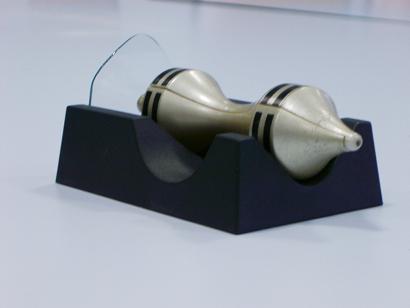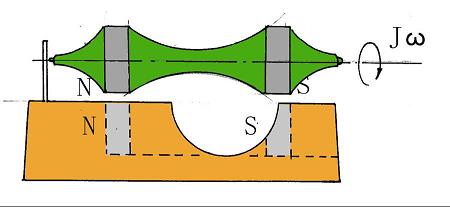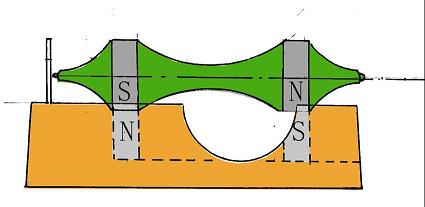A magnetic "float" model
The model demonstrates the effect of magnetic force although the force cannot be seen.




Fig. 1-6 shows a model consisting of an axisymmetric body and a base unit. There are two magnetic rings in the axisymmetric body and two magnets in the base unit.
It appears surprising that the axisymmetric body can be in an equilibrium position when no vertical supports are provided. Where is the force that supports the weight of the axisymmetric body? When opposite poles of the magnets in the axisymmetric body and the base unit are the same, the body can be positioned above the base with no visible support (Figs. 1-6a and 1-6c). When the opposite poles are different, the body rests on the base (Figs. 1-6b and 1-6d). In both cases the external force is the weight of the body. In the first case the reaction forces are the magnetic forces that push the body away and up while in the second case the reaction forces are provided through the points of contact between the unit and the base.
When the free end of the body (Fig 1-6a) is twisted using the thumb and index finger, the body is able to rotate many times before stopping. This is because there is little friction between the rotating body and its lateral glass support.
